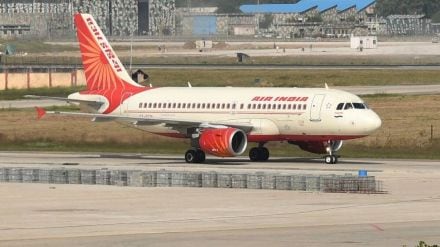The record 470-aircraft purchase order placed by Air India with Boeing and Airbus could cost the airline around $70 billion going by their listed price, MD and CEO Campbell Wilson said on Monday. He added that the carrier plans to fund the same through a variety of options, including internal cash flow, shareholder equity and sale and leaseback arrangement.
“As a private organisation, we don’t discuss the details of our financing route. It will be a combination of many things. It will be part-financed in cash and shareholder equity and we will also be exploring other means like sale and lease back of aircraft,” Wilson said.
Aircraft leaseback is an arrangement in which the company that sells an asset can lease back that same asset from the buyer. This method, popular in the aviation industry, releases the asset from the balance sheet of the original buyer.
Air India’s orders include narrow-body jets, which make up 80% of the order, followed by wide-body. These planes will be used on domestic and international routes after being tuned to Air India’s upgraded brand standards. Airbus has committed to deliver 250 aircraft, while Boeing will deliver 220. The airline has the option to extend the order by another 370 aircraft.
Wilson said that the full-service carrier will be known as Air India after the merger with Vistara, and Vistara as a brand will be phased out. However, its “good practices” will be incorporated into the merged entity. “Vistara has a very strong recognition in the Indian market but outside of India, it’s Air India that is recognised with its 90-year history. We have communicated to the staff that the future full-service carrier will be called Air India, but we would like to retain and celebrate some of the Vistara heritage in that new manifestation,” he added.
The new full-service Air India will be an amalgam of the existing Air India and Vistara. “But we expect many of the practices and systems (in Air India) to be those of Vistara, it being a younger and privatised airline that has been able to bring in the learnings from its other shareholder (Singapore Airlines),” Wilson said.
While the integration of the two airlines needs approval from the Competition Commission of India (CCI) and the Directorate General of Civil Aviation (DGCA) before the commencement of the formal integration procedure, Wilson said that Air India has appointed some ‘external parties’ to generate solutions in the meantime.
“We are in the first phase of the process (CCI) but in anticipation are working with external parties to know what are the things we need to focus on in the process of that integration and what would the end state look like once we have got the clearance,” Wilson said, adding that the integration of low-cost carriers Air India Express and AirAsia India will be complete in the next few months.
Air India’s iconic mascot, the Maharaja, may have disappeared within the airline’s communication channels but could make a comeback in a different avatar as the company is exploring ways for it to be re-engaged.
“The Maharaja is clearly something we would like to retain and something we would want to be part of Air India. We are still working on how exactly it might be involved and used. It is very well-known and beloved in India. It is not that well-known outside,” Wilson said.
Air India has appointed London-based brand and design consultancy firm Futurebrands to assist it with the planned transformation.
In the past few months, Air India has added 1,200 ground staff personnel, 2,000 cabin crew, and 300 staff at airports in India and around the world.
